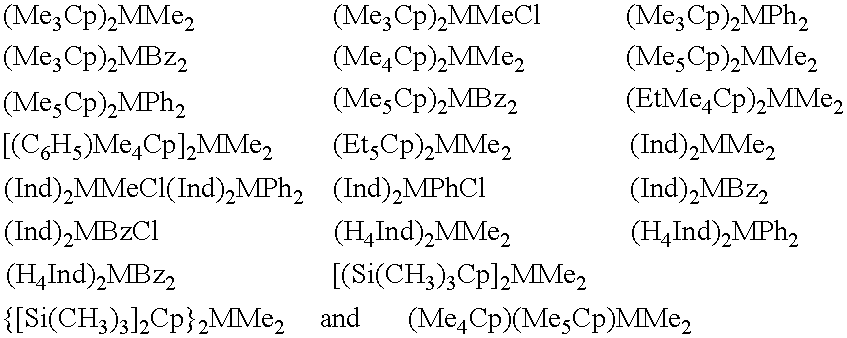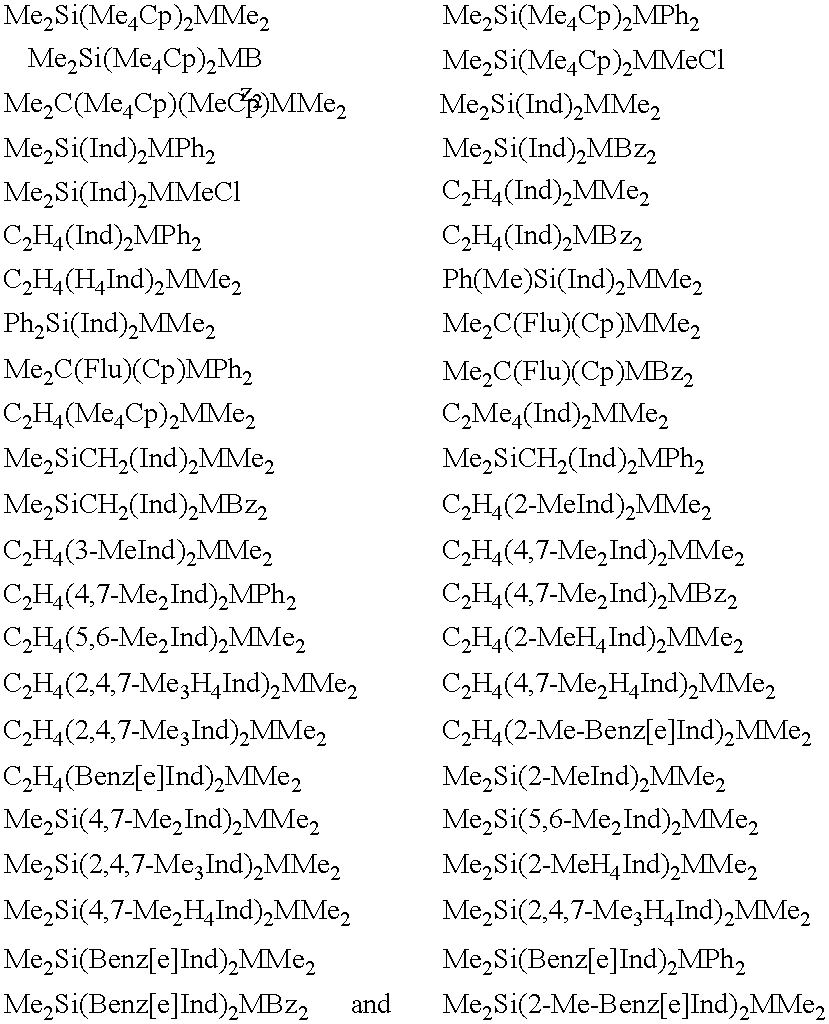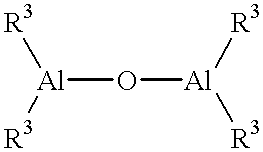Process for the preparation of metallocene compounds
a metallocene compound and metallocene technology, applied in the field of process for the preparation of metallocene compounds, can solve the problems of unsatisfactory total yield, two reaction steps, and low total yield of the final crude produ
- Summary
- Abstract
- Description
- Claims
- Application Information
AI Technical Summary
Problems solved by technology
Method used
Image
Examples
example 2
Synthesis of Ethylenebis(4,7-dimethyl-1-indenyl) Zirconium Dimethyl
Using darkened glassware, 8.4 ml of a solution of MeLi 1.6 M in Et.sub.2 O (13.44 mmoles) were added, at the temperature of -70.degree. C., over a period of about 10 minutes, to a solution containing 1 g of 1,2-bis(4,7-dimethyl-indenyl)ethane (3.2 mmoles) in 30 mL of Et.sub.2 O. The mixture was allowed to warm slowly to room temperature and maintained under stirring for 3 hours. An increasing turbidity was observed, with the final formation of a white suspension.
To said suspension, cooled to -80.degree. C., was quickly added a mixture of 0.746 g of ZrCl.sub.4 (3.2 mmol) in 30 mL pentane, previously cooled to -80.degree. C. too. The temperature was allowed to warm slowly to room temperature overnight (about 16 hours) and a dark brown solution was finally obtained. The reaction mixture was then brought to dryness under reduced pressure. The thus obtained brown solid was extracted with 40 mL of toluene and then the filt...
example 3
Synthesis of Ethylenebis(1-indenyl) Zirconium Dimethyl
Using darkened glassware, 8.4 ml of a solution of MeLi 1.6 M in Et.sub.2 O (13.44 mmoles) were added, at the temperature of -70.degree. C., over a period of about 10 minutes, to a solution containing 0.82 g of bis(indenyl)ethane (3.2 mmoles; 90% of G.C. purity) in 30 ml of Et.sub.2 O. The mixture was allowed to warm slowly to room temperature and stirred for 3 hours. An increasing turbidity was observed, with the final formation of a white suspension.
To said white suspension, cooled to -80.degree. C., was quickly added a mixture of 0.746 g of ZrCl.sub.4 (3.2 mmoles) in 30 ml pentane, previously cooled to -80.degree. C. The temperature was allowed to warm slowly to room temperature overnight (about 16 hours) and a dark brown solution was finally obtained. The reaction mixture was then brought to dryness under reduced pressure. The brown solid was extracted with 40 ml of toluene and then the filtrate was evaporated to dryness under...
example 4
Synthesis of Isopropylidenebis(1-indenyl) Zirconium Methylchloride
Using darkened glassware, 10.23 ml of a solution of MeLi 1.6 M in Et.sub.2 O (16.38 mmoles) were added, at the temperature of -70.degree. C., over a period of about 10 minutes, to a solution containing 1.062 g of 2,2-bis(indenyl)propane (3.9 mmoles) in 30 ml of Et.sub.2 O. The mixture was allowed to warm slowly to room temperature and stirred for 3 hours. An increasing turbidity was observed, with the final formation of an orange suspension.
To said orange suspension, cooled to -80.degree. C., was quickly added a mixture of 0.909 g of ZrCl.sub.4 (3.9 mmoles) in 30 ml pentane, previously cooled to -80.degree. C. The temperature was allowed to warm slowly to room temperature overnight (about 16 hours) and a dark brown solution was finally obtained. The reaction mixture was then brought to dryness under reduced pressure. The brown solid was extracted with 40 ml of toluene and then the filtrate was evaporated to dryness un...
PUM
| Property | Measurement | Unit |
|---|---|---|
| temperature | aaaaa | aaaaa |
| temperature | aaaaa | aaaaa |
| temperature | aaaaa | aaaaa |
Abstract
Description
Claims
Application Information
 Login to View More
Login to View More - R&D
- Intellectual Property
- Life Sciences
- Materials
- Tech Scout
- Unparalleled Data Quality
- Higher Quality Content
- 60% Fewer Hallucinations
Browse by: Latest US Patents, China's latest patents, Technical Efficacy Thesaurus, Application Domain, Technology Topic, Popular Technical Reports.
© 2025 PatSnap. All rights reserved.Legal|Privacy policy|Modern Slavery Act Transparency Statement|Sitemap|About US| Contact US: help@patsnap.com



